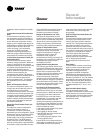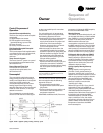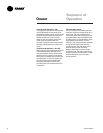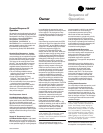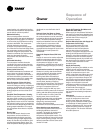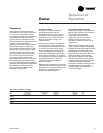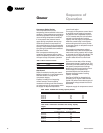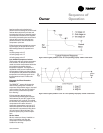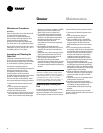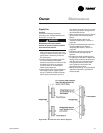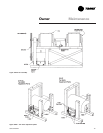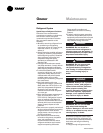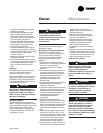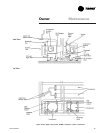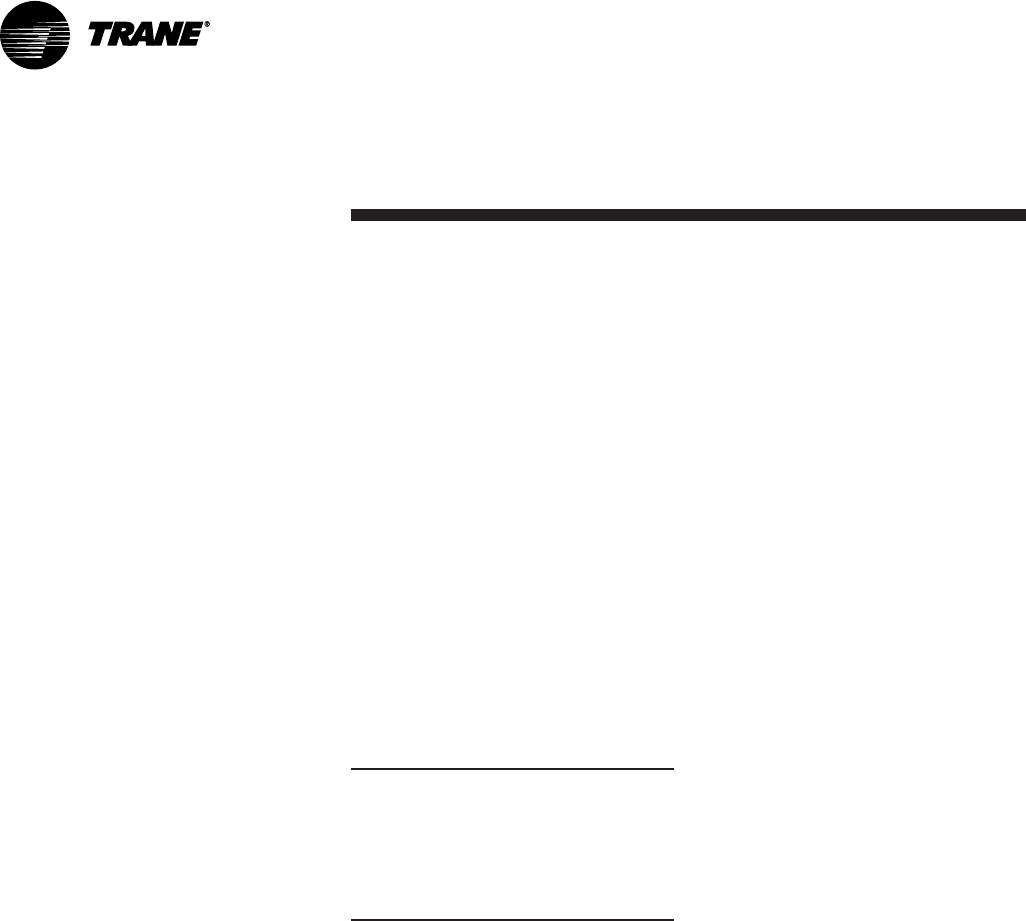
98 SCXG-SVX01B-EN
Maintenance Procedures
Air Filters
Filter access doors are on the same side
of the unit as the water piping
connections. To replace throwaway
filters, remove the dirty elements and
install new filters with the filter’s
directional arrows pointing toward the
fan. Verify that no air bypasses the filters.
All unit sizes require four 16 x 25 x 2 inch
(508 x 635 x 51 mm) and four 20 x 25 x 2
inch (508 x 635 x 51 mm) filters.
Inspecting and Cleaning the
Drain Pan
Check the condensate drain pan and
drain line to ensure that the condensate
drains properly at least every six months
or as dictated by operating experience.
If evidence of standing water or
condensate overflow exists, take steps to
identify and remedy the cause
immediately. Refer to the trouble
shooting section of this manual for
possible causes and solutions. If microbial
growth is evident in the drain pan,
remove and clean it immediately. Clean
drain pans using the following procedure:
1. Disconnect all electrical power to the
unit.
2. Don the appropriate personal
protective equipment (PPE).
3. Remove all standing water.
4. Use a scraper or other tools to remove
and solid matter. Remove solid matter
with a vacuum device that utilizes high
Owner
Maintenance
efficiency particulate arrestance (HEPA)
filters with a minimum efficiency of
99.97% at 0.3 micron particle size.
5. Thoroughly clean the contaminated
area(s) with a mild bleach and water
solution or an EPA-approved sanitizer
specifically designed for HVAC use.
Carefully follow the sanitizer
manufacturer’s instructions regarding
product use.
6. Immediately rinse the drain pan
thoroughly with fresh water to prevent
potential corrosion from the cleaning
solution.
7. Allow the unit to dry thoroughly before
putting the system back into service.
8. Determine and correct the cause of
any microbial contamination.
9. Be careful that the contaminated
material does not contact other areas of
the unit or building. Properly dispose of
all contaminated materials and cleaning
solution.
Note: Standing water in drain pans can
promote microbial growth (mold) which
may cause unpleasant odors and serious
health-related indoor air quality problems. If
microbial growth is found, it must be
removed immediately and that portion of
the unit properly cleaned and sanitized.
Inspecting and Cleaning the
Fan
Inspect the fan section every six months
or more frequently if operating
experience dictates. Clean accumulated
dirt and organic matter on the fan interior
surfaces following the procedure below:
1. Disconnect all electrical power to the
unit.
2. Don the appropriate personal
protective equipment (PPE).
3. Use a portable vacuum with HEPA
filtration to remove the loose dirt and
organic matter. The filter should be
99.97% efficient at 0.3 micron particle
size.
4. If no microbial growth (mold) exists,
thoroughly clean the fan and associated
components with an industrial cleaning
solution. Carefully follow the cleaning
solution manufacturer’s instructions
regarding personal protection and
ventilation when using their product.
5. If microbial growth is present, remove
the contamination (Step 2) and
thoroughly clean the affected area with
an EPA-approved sanitizer specifically
designed for HVAC use. Carefully follow
the sanitizer manufacturer’s instructions
regarding the product usage.
6. Rinse the affected surfaces thoroughly
with fresh water and a fresh sponge to
prevent potential corrosion of metal
surfaces.
7. Allow the unit to dry completely before
putting it back into service.
8. Ensure that contaminated material
does not contact other areas of the unit
or building. Properly dispose of all
contaminated materials and cleaning
solution.
Determine the cause of any microbial
growth (mold) and take action to ensure it
does not reoccur.



